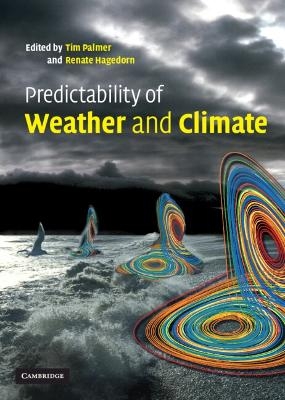
Predictability of Weather and Climate
Cambridge University Press (Verlag)
978-0-521-84882-4 (ISBN)
- Lieferbar (Termin unbekannt)
- Versandkostenfrei
- Auch auf Rechnung
- Artikel merken
The topic of predictability in weather and climate has advanced significantly in recent years, both in understanding the phenomena that affect weather and climate and in techniques used to model and forecast them. This book, first published in 2006, brings together some of the world's leading experts on predicting weather and climate. It addresses predictability from the theoretical to the practical, on timescales from days to decades. Topics such as the predictability of weather phenomena, coupled ocean-atmosphere systems and anthropogenic climate change are among those included. Ensemble systems for forecasting predictability are discussed extensively. Ed Lorenz, father of chaos theory, makes a contribution to theoretical analysis with a previously unpublished paper. This well-balanced volume will be a valuable resource for many years. High-calibre chapter authors and extensive subject coverage make it valuable to people with an interest in weather and climate forecasting and environmental science, from graduate students to researchers.
Tim N. Palmer is Head of the Probability Forecasting and Diagnostics Division at the European Centre for Medium-Range Weather Forecasts (ECMWF). Renate Hagedorn is the education officer for the ECMWF research department.
Preface; 1. Predictability of weather and climate: from theory to practice T. N. Palmer; 2. Predictability from a dynamical meteorology perspective B. Hoskins; 3. Predictability - a problem partly solved E. N. Lorenz; 4. The Liouville Equation and atmospheric predictability M. Ehrendorfer; 5. Application of generalized stability theory to deterministic and statistical prediction P. J. Ioannou and B. F. Farrell; 6. Ensemble-based atmospheric data assimilation T. M. Hamill; 7. Ensemble forecasting and data assimilation: two problems with the same solution? E. Kalnay, B. Hunt, E. Ott and I. Szunyogh; 8. Approximating optimal state estimation B. F. Farrell and P. J. Ioannou; 9. Predictability past predictability present L. A. Smith; 10. Predictability of coupled processes A. Timmermann and F.-F. Jin; 11. Predictability of tropical intraseasonal variability D. E. Waliser; 12. Predictability of seasonal climate variations: a pedagogical review J. Shukla and J. L. Kinter III; 13. Predictability of the North Atlantic thermohaline circulation M. Latif, H. Pohlmann and W. Park; 14. On the predictability of flow-regime properties on interannual to interdecadal timescales F. Molteni, F. Kucharski and S. Corti; 15. Model error in weather and climate forecasting M. Allen, D. Frame, J. Kettleborough and D. Stainforth; 16. Observations, assimilation and the improvement of global weather prediction - some results from operational forecasting and ERA-40 A. J. Simmons; 17. The ECMWF ensemble prediction system R. Buizza; 18. Limited-area ensemble forecasting: the COSMO-LEPS system S. Tibaldi, T. Paccagnella, C. Marsigli, A. Montani and F. Nerozzi; 19. Operational seasonal prediction D. L. T. Anderson; 20. Weather and seasonal climate forecasts using the superensemble approach T. N. Krishnamurti, T. S. V. Vijaya Kumar, A. K. Mitra, W. T. Yun, L. Stefanova, B. P. Mackey, A. J. O'Shay and W. K. Dewar; 21. Predictability and targeted observations A. Thorpe and G. N. Petersen; 22. The attributes of forecast systems: a framework for the evaluation and calibration of weather forecasts Z. Toth, O. Talagrand and Y. Zhu; 23. Predictability from a forecast provider's perspective K. Mylne; 24. Ensemble forecasts: can they provide useful early warnings? F. Lalaurette and G. van der Grijn; 25. Predictability and economic value D. S. Richardson; 26. A three-tier overlapping prediction scheme: tools for strategic and tactical decisions in the developing world P. J. Webster, T. Hopson, C. Hoyos, A. Subbiah, H.-R. Chang and R. Grossman; 27. DEMETER and the application of seasonal forecasts R. Hagedorn, F. J. Doblas-Reyes and T. N. Palmer; Index.
| Verlagsort | Cambridge |
|---|---|
| Sprache | englisch |
| Maße | 178 x 254 mm |
| Gewicht | 1602 g |
| Themenwelt | Naturwissenschaften ► Geowissenschaften ► Meteorologie / Klimatologie |
| ISBN-10 | 0-521-84882-2 / 0521848822 |
| ISBN-13 | 978-0-521-84882-4 / 9780521848824 |
| Zustand | Neuware |
| Informationen gemäß Produktsicherheitsverordnung (GPSR) | |
| Haben Sie eine Frage zum Produkt? |
aus dem Bereich


